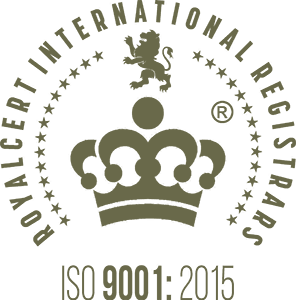Companies across the aviation ecosystem are taking the once in a lifetime opportunity the pandemic has offered to rethink aviation operations bottom up. Many airlines are avoiding investing in overheads that were scaled back as air travel collapsed. The search for efficient ways of operating often centres on maintenance and monitoring as time lost during repairs and even routine maintenance operations is the single most expensive drag on airline and airport profitability.
Combined with the power of other technologies such as IOT and cloud computing, blockchain and predictive analysis are two powerful trends the aviation industry is using to transform maintenance, repair and overhaul (MRO) operations.
Block Chain: birth certificates for airplane parts
The lack of a digital, shareable, global parts database leaves the entire OEM and MRO industry vulnerable to theft, fraud, cost inefficiencies and safety concerns. A detailed maintenance history is critical to the effective and efficient maintenance and management of aircraft as well as parts and components. It can help reduce costs by eliminating losses due to AOG, unplanned maintenance; improve worker productivity and support the value of parts and planes in the end of lease after market.
In 2019, various industry players came together to form the MRO Blockchain Alliance. The alliance will oversee the aviation industry’s research into the use of blockchain to ‘digitally track (digital thread) and record (digital passport) the movements and maintenance history of aircrafts parts across airlines, lessors, OEMs as well as logistics suppliers and maintenance providers.’
Advantages
The use of blockchain or a ‘decentralized ledger’ to track every installation, removal and repair by date, length of service, location and technician of any part would deliver
- secure document storage
- confidentiality and data privacy
- improved insights on repair time and inventory
- automated workflows
- efficient record reconciliation
Global access to shareable, digitized data updated in real-time would deliver much needed transparency to the industry, enable a proactive approach to maintenance and by serving as a central clearinghouse of parts deliver greater clarity on pricing and quality.
*pre-pandemic estimates
Predictive Analysis: looking into the future
As companies move their operations online, the data emerging out of those operations is becoming accessible, measurable and exploitable. It can be aggregated, analysed and mined for trends, information and insight by multiple stakeholders for a range of uses. More importantly, it can be used to predict and proactively manage problems to head off repair and maintenance related disruptions, minimize AOG, cut costs and improve efficiencies.
Artificial intelligence or predictive analysis is already being used in engine health monitoring (EHM) programs but has been harder to implement in the component and line maintenance setting.
Challenges
Research by Boston Consulting Group identifies three key hurdles to the successful implementation of integrated, AI-led predictive maintenance programs:
- Lack of leadership. The argument for PM action centres around the cost savings to be derived from minimizing maintenance related disruption and is made by maintenance leaders. PM action should be a strategic imperative for the senior leadership team with the broader objective of keeping planes in the sky.
- Data, a competitive advantage irrespective of industry, is treated as proprietary and accordingly protected across airlines, OEMs and MROs. An AI-led maintenance approach rooted in predictive analysis is not compatible with this siloed approach to data management. All stakeholders across the maintenance supply chain will need to take a collaborative approach to consolidating and standardizing maintenance data as the first step towards implementing intelligence driven predictive maintenance programs.
- Implementing and installing the technological and knowledge infrastructure for a predictive MRO environment will require significant investments of time and resource. It will also put frontline maintenance teams under huge pressure to adjust. Senior leadership must prepare for both resistance and friction by putting in place comprehensive communication and training programs to ensure all stakeholders actively contribute to the success of the program.
Advantages
In an AI-led maintenance world,
- a mechanic could look at an aircraft’s electronic database to assess and prepare for faults and repairs
- a lessor could analyse it to establish standards of quality for redelivery purposes
- an operator could use it to monitor inventory and maintenance requirements in real-time.
Conclusion
Blockchain solutions and predictive technology that would allow OEMs, MROs and operators to continuously monitor and manage aircraft and parts, including its ‘as-flown’ history will transform the way MRO is managed. According to PwC using blockchain alone to create a global database of parts could generate a 4% (US$40 billion) revenue boost to the aerospace industry while reducing global MRO costs by 5% (US$3.5 billion)*.
This post is one of a series of blogs on how technology is transforming MRO services. You can read the introduction here. Other blogs include Cloud Software and IITO and 3D Printing and Augmented Reality.



